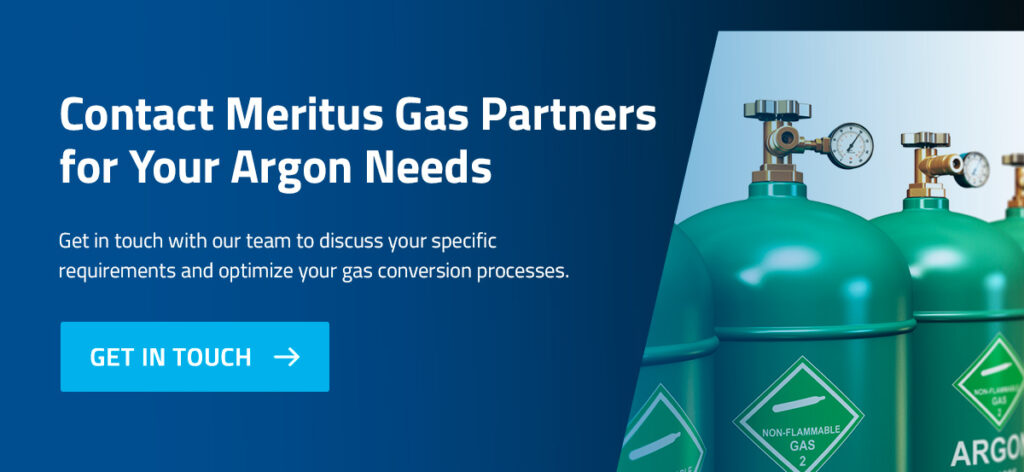
Accurately converting argon gas measurements is vital for a wide range of industrial applications. Below is a chart that highlights key conversion data for argon gas, including the relationship between cubic feet, gallons and other units of measurement.
| Gas | Liquid | Weight | ||||
|---|---|---|---|---|---|---|
| Input | Cubic Feet scf |
Cubic Meters Nm3 |
Gallons gal |
Liters l |
Pounds lbs |
Kilograms kg |
| 1 scf gas | 1.0 | 0.02628 | 0.008893 | 0.03366 | 0.1034 | 0.04690 |
| 1 Nm3 gas | 38.04 | 1.0 | 0.3382 | 1.2802 | 3.933 | 1.7840 |
| 1 gallon liquid | 112.5 | 2.957 | 1.0 | 3.785 | 11.630 | 5.276 |
| 1 liter liquid | 29.71 | 0.7812 | 0.2642 | 1.0 | 3.072 | 1.3936 |
| 1 pound | 9.671 | 0.2543 | 0.08600 | 0.3255 | 1.0 | 0.4536 |
| 1 kilogram | 21.32 | 0.5605 | 0.18957 | 0.7176 | 2.205 | 1.0 |
| 1 short ton | 19,342 | 508.6 | 172 | 651.0 | 2,000 | 907.2 |
Argon gas conversions are essential in applications where precise volume measurements are critical to process integrity and safety.
One of the most frequently asked questions is:
How many cubic feet of argon gas are in 1 gallon of liquid argon?
1 gallon of liquid argon converts to approximately 112.5 standard cubic feet (scf) of argon gas.
Several factors can influence the efficiency of argon gas conversion, including:
To optimize conversion efficiency, the equipment should be well-maintained and calibrated. Additionally, consider using high-purity argon gas and operating under optimal temperature and pressure conditions.
Handling argon gas requires strict adherence to safety protocols. Improper handling of liquid argon can pose risks due to its extremely low temperature (-302ºF). Compliance with safety standards like those set by the Compressed Gas Association (CGA) and proper training in handling cryogenic substances promotes a safe work environment during gas storage and conversion.
Meritus Gas Partners offers a wide range of industrial gas solutions, including reliable argon gas supply and expert consultation. Get in touch with our team to discuss your specific requirements and optimize your gas conversion processes with the support of our experienced professionals.
